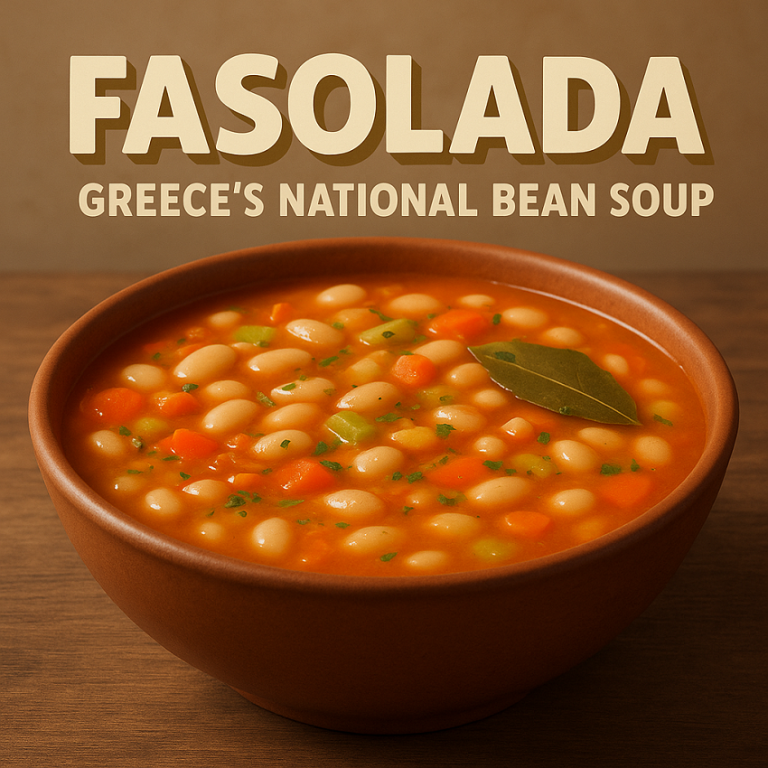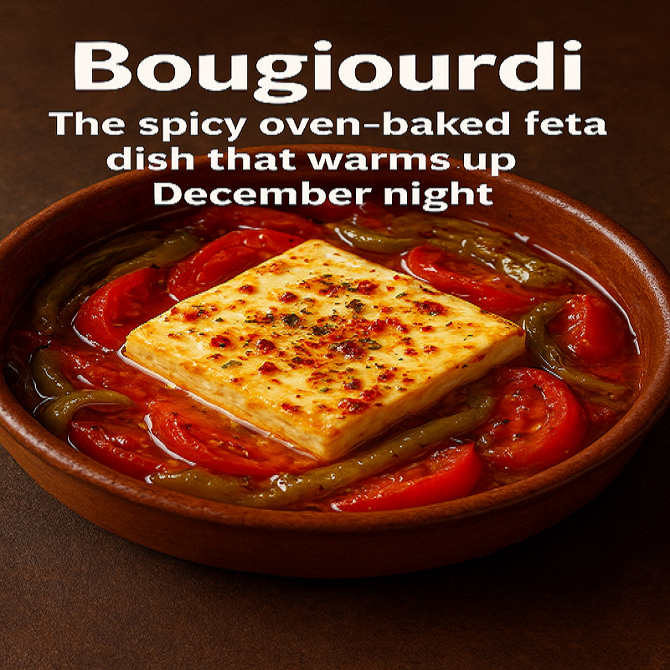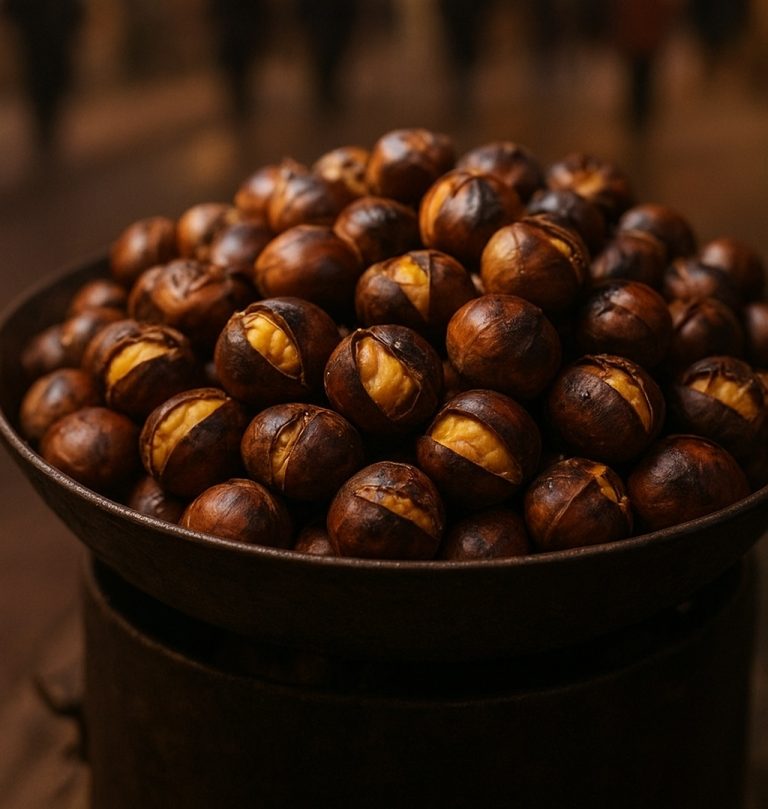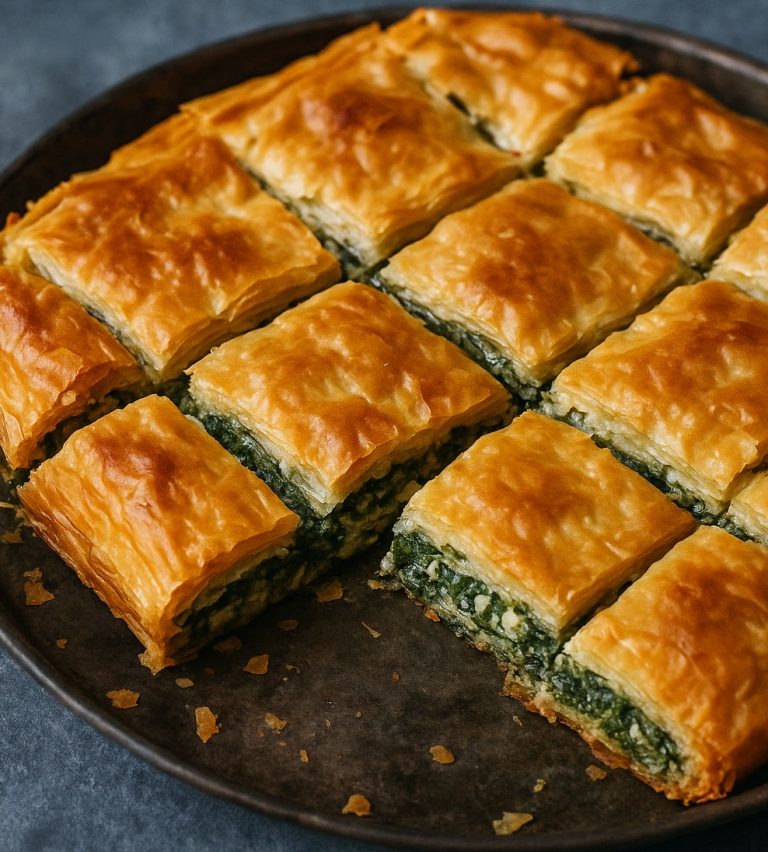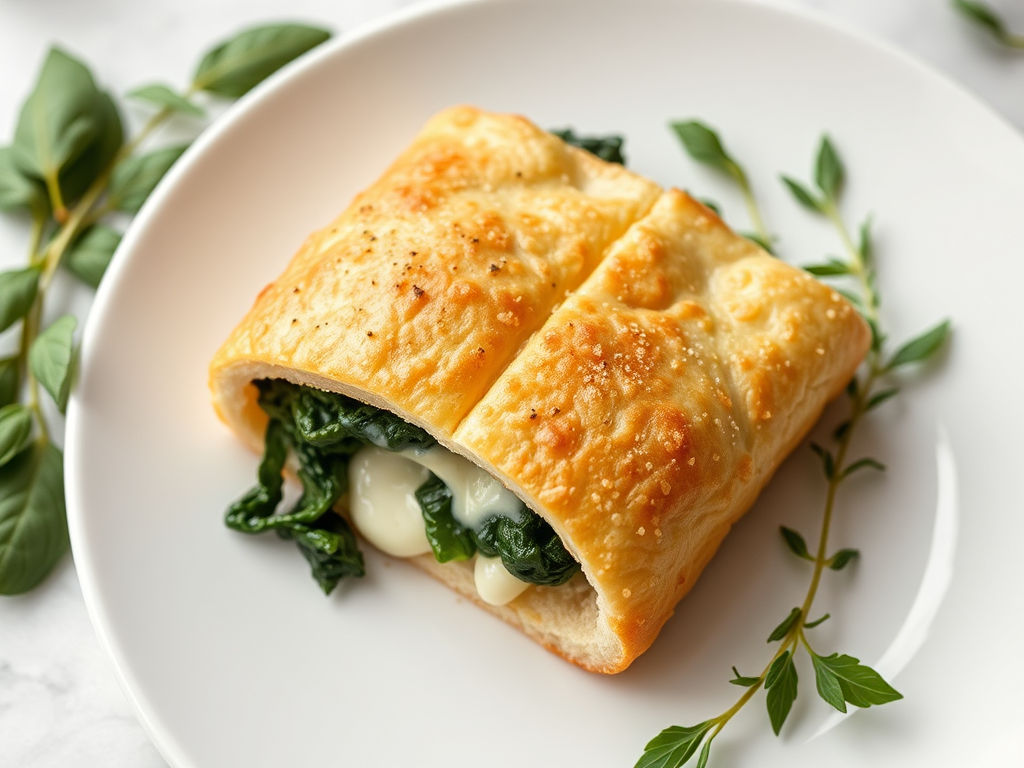
Introduction
Bougatsa is a beloved pastry from Greece, often enjoyed for breakfast or as a snack. With its flaky layers of phyllo dough, filled with a variety of fillings, bougatsa has become a staple in Greek cuisine. One of the most popular variations is the spinach and cheese bougatsa, which combines the earthy flavors of spinach with the creamy richness of cheese. This article explores the origins, ingredients, preparation, cultural significance, and some variations of this delightful dish.
Ingredients
The key components of spinach and cheese bougatsa include:
- Phyllo Dough: Thin layers of dough that create a flaky and crispy texture. Making phyllo from scratch is an art, but store-bought options are widely available and convenient.
- Spinach: Fresh or frozen spinach provides a nutritious and flavorful filling. When using fresh spinach, it’s important to wash and dry it thoroughly to remove any grit.
- Cheese: Traditionally, a mix of feta cheese and other cheeses like ricotta or kasseri is used for a creamy texture and tangy flavor. Feta adds a salty bite, while ricotta contributes creaminess.
- Onion: Sautéed onions add sweetness and depth to the filling. Yellow or sweet onions work best, as they caramelize beautifully when cooked.
- Eggs: Used to bind the filling together and enhance richness. They also help create a fluffy texture.
- Herbs: Fresh herbs like dill or parsley can be added for extra flavor. Dill is particularly popular in Greek cooking and pairs well with spinach.
- Olive Oil or Butter: Used to brush the phyllo, ensuring a golden and crispy finish. Olive oil adds a Mediterranean touch, while butter enhances the richness.
Preparation
Step-by-Step Guide
- Prepare the Filling:
- Sauté finely chopped onions in olive oil over medium heat until translucent and slightly golden. This should take about 5-7 minutes.
- Add the spinach to the pan, cooking until wilted. If using frozen spinach, ensure it is thawed and drained of excess water.
- In a mixing bowl, combine the cooked spinach and onions with crumbled feta and any additional cheeses, beaten eggs, and herbs. Season with salt and pepper to taste. Mix well until all ingredients are evenly incorporated.
- Assemble the Bougatsa:
- Preheat the oven to 375°F (190°C).
- Lay out a sheet of phyllo dough on a clean surface and brush it lightly with olive oil or melted butter.
- Place another sheet on top and repeat the oiling process to create a multi-layered effect.
- Spoon a portion of the filling along one edge of the phyllo. Depending on your desired size, you can make them larger or smaller.
- Fold the phyllo over the filling to create a roll, tucking in the edges to seal the filling securely. This technique helps prevent any leaks during baking.
- Bake:
- Place the bougatsa on a baking sheet lined with parchment paper. Brush the tops with more olive oil or butter for an extra crispy finish.
- Bake for 30-35 minutes or until golden brown and crispy. Keep an eye on them towards the end to ensure they don’t overbake.
- Serve:
- Allow the bougatsa to cool slightly before serving. It can be enjoyed warm or at room temperature, often dusted with powdered sugar or served with a dollop of yogurt on the side.
Cultural Significance
In Greek culture, bougatsa is more than just a food item; it’s a symbol of hospitality and comfort. It’s common to find bougatsa in bakeries, where the aroma of freshly baked pastries draws in locals and tourists alike. The dish is often enjoyed with a cup of Greek coffee, making it a perfect start to the day or a delightful snack.
Bougatsa also carries a sense of nostalgia for many Greeks, often associated with family gatherings or Sunday brunches. Each bite evokes memories of shared moments and the warmth of home. It’s a dish that transcends generations, with each family likely having its own cherished recipe passed down through the years.
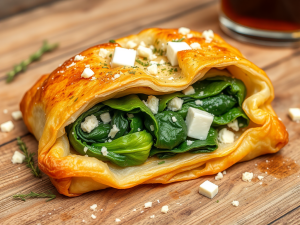
Variations of Bougatsa
While spinach and cheese is a classic filling, bougatsa can be made with a variety of other fillings, catering to different palates:
- Sweet Bougatsa: Some variations feature sweet fillings such as custard or cream, often dusted with powdered sugar and cinnamon.
- Meat Bougatsa: Another savory option includes minced meat, usually seasoned with herbs and spices, providing a hearty alternative.
- Mixed Vegetables: For a more robust vegetarian option, a mix of vegetables like mushrooms, peppers, and zucchini can be added to the filling.
- Regional Variations: Different regions in Greece may have their own unique takes on bougatsa, incorporating local ingredients or traditional spices.
Conclusion
Spinach and cheese bougatsa is a wonderful representation of Greek culinary tradition, combining simple ingredients to create a dish that is both comforting and satisfying. Whether you’re a seasoned cook or a beginner, making bougatsa at home is a rewarding experience that brings a taste of Greece to your kitchen. Enjoying this delicious pastry is not just about the flavors; it’s about embracing a piece of Greek culture and history.
As you prepare to make your own bougatsa, remember that the process is as much about enjoyment as it is about the final product. Share it with family and friends, and savor the rich flavors and textures that make this dish a true culinary treasure. Whether served at breakfast, as a snack, or at a festive gathering, spinach and cheese bougatsa is sure to delight everyone at the table. So, gather your ingredients, roll out the phyllo, and experience the magic of this iconic Greek pastry.
